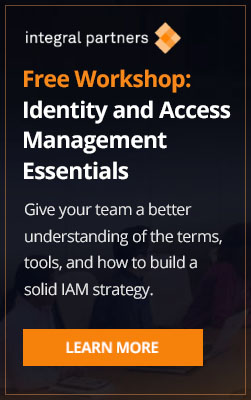As organizations accelerate their migration to cloud environments, managing access and entitlements within these dynamic infrastructures becomes increasingly critical. Cloud Infrastructure Entitlements Management (CIEM) has emerged as a pivotal component in the broader Identity and Access Management (IAM) and cybersecurity landscape. This blog delves into CIEM, its importance, and its role within a comprehensive IAM and cybersecurity program.
Understanding CIEM
Cloud Infrastructure Entitlements Management (CIEM) refers to the administration of access rights and permissions assigned to identities—be they users, services, or applications—within cloud environments. Unlike traditional on-premises setups, cloud infrastructures are characterized by their fluidity: resources are frequently instantiated and decommissioned, and identities are continually created and modified. This constant flux necessitates an agile, granular approach to managing entitlements.
CIEM solutions provide a suite of capabilities designed to automate the discovery, analysis, and remediation of entitlements across various cloud platforms. These tools ensure that only authorized identities have the appropriate levels of access to resources, thereby mitigating the risk of over-privileged access—a prevalent security threat in cloud environments.
Podcast: Spend 15 minutes learning from DJ Morimanno , the Director of Identity and Access Management Technologies, learning about CIEM. The discussion includes the fundamentals of CIEM and how you can get started.
The Key Components of CIEM
- Visibility and Discovery: CIEM tools offer deep visibility into entitlements across multi-cloud environments. They enable the discovery of all identities and their associated permissions, creating a comprehensive inventory of access rights. This visibility is crucial for identifying potential security gaps and ensuring consistent policy enforcement.
- Policy Management: These solutions allow organizations to define, implement, and enforce granular policies for entitlements. Policies are typically based on the principle of least privilege, ensuring that identities have only the access necessary to perform their tasks. This minimizes the risk of excessive permissions leading to security breaches.
- Risk Assessment and Analysis: CIEM tools continuously evaluate entitlements for risks such as over-privileged access or dormant permissions. Advanced analytics and machine learning algorithms help identify potential security vulnerabilities, prioritize them based on risk level, and suggest corrective actions.
- Automation and Remediation: Automated workflows in CIEM solutions can proactively remediate risky entitlements by revoking unnecessary permissions or adjusting access levels. This automation not only reduces administrative overhead but also enhances security by ensuring prompt and consistent enforcement of policies.
- Reporting and Compliance: CIEM tools generate detailed, customizable reports on entitlements and access activities. These reports support compliance with regulatory requirements and internal audit processes by providing evidence of proper entitlement management and policy adherence.
The Role of CIEM in IAM and Security Programs
Enhancing IAM Programs
IAM programs aim to ensure that the right individuals have the right access to the right resources at the right times for the right reasons. CIEM significantly enhances IAM by providing:
- Granular Control: CIEM offers detailed and precise control over cloud entitlements, supplementing traditional IAM capabilities. This granular control is essential for maintaining security in complex, multi-cloud environments.
- Dynamic Adaptation: Cloud environments are inherently dynamic, with constant changes in infrastructure and identities. CIEM ensures that IAM policies adapt in real-time to these changes, maintaining appropriate access controls continuously.
- Integration with IAM Solutions: CIEM solutions can integrate with existing IAM tools, providing a unified approach to managing access across on-premises and cloud environments. This integration ensures consistency in policy enforcement and simplifies management.
Strengthening Security Posture
CIEM plays a critical role in fortifying an organization’s cybersecurity defenses:
- Minimizing Attack Surface: By enforcing the principle of least privilege and continuously monitoring entitlements, CIEM reduces the potential attack surface within cloud environments. This minimizes the opportunities for attackers to exploit over-privileged accounts.
- Detecting Anomalies: CIEM solutions can identify unusual access patterns or entitlement changes, which may indicate malicious activities. This early detection capability is crucial for enabling swift incident response and mitigating potential breaches.
- Mitigating Insider Threats: Managing and monitoring entitlements through CIEM helps mitigate risks associated with insider threats. By ensuring that employees or contractors do not have excessive access, organizations can reduce the likelihood of intentional or unintentional misuse of privileges.
Implementing CIEM: Best Practices
To effectively implement CIEM, organizations should consider the following best practices:
- Adopt a Zero-Trust Model: Implement a zero-trust security model that verifies every access request, regardless of its origin, and continuously monitors entitlements. This model assumes that no entity, whether inside or outside the network, can be trusted by default.
- Regular Audits and Reviews: Conduct regular audits of entitlements to identify and remediate over-privileged access and ensure compliance. These audits should be thorough and cover all identities and resources within the cloud environment.
- Leverage Automation: Utilize CIEM tools that offer automation for entitlement management. Automation reduces manual efforts, improves accuracy, and ensures timely response to changes in entitlements. Automated workflows can also facilitate continuous compliance and rapid remediation of identified risks.
- Integrate with Existing Security Tools: Ensure that CIEM solutions integrate seamlessly with existing IAM, SIEM (Security Information and Event Management), and other security tools. This integration allows for a holistic approach to security, enhancing visibility and coordination across different security domains.
- Educate and Train Staff: Train security and IT teams on the importance of CIEM and best practices for managing cloud entitlements. Regular training sessions and awareness programs can help ensure that staff are knowledgeable about the latest threats and mitigation strategies.
Looking Forward
As cloud adoption continues to grow, managing entitlements within these environments becomes increasingly complex yet critical. CIEM provides the necessary tools and capabilities to ensure that access to cloud resources is appropriately managed, enhancing the overall IAM and cybersecurity posture of an organization. By integrating CIEM into their broader security strategy, organizations can effectively mitigate risks, ensure compliance, and protect their valuable cloud assets.
CIEM is not merely an add-on but a fundamental component of a robust IAM and security framework. It bridges the gap between traditional IAM practices and the unique challenges posed by cloud environments. As such, investing in CIEM solutions and practices is essential for any organization aiming to secure its cloud infrastructure in today’s evolving threat landscape.
You can learn more about the CIEM services we offer, including scanning and remediation here: https://www.integralpartnersllc.com/iam-services/ciem-security-cloud-infrastructure-entitlement-management-services/

As Director of Identity and Access Management Technologies and a leader in our Advisory practice, David is responsible for designing, implementing, and managing Identity and Access Management (IAM) programs for our clients. This requires a deep understanding of the Identity landscape, including industry standards and best practices, as well as experience with IAM tools and technologies.


Comments are closed.